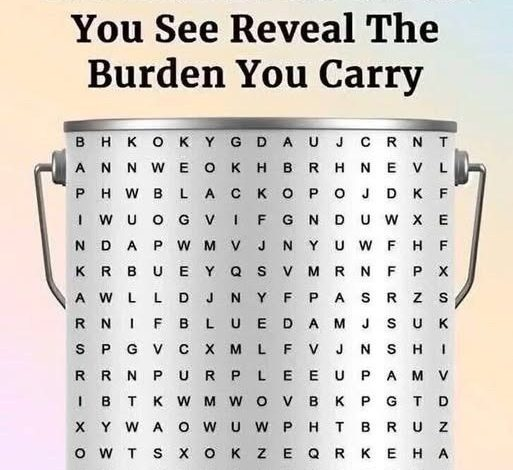More Than Preference, How Colors Reflect Your Mood and Mind!


🎨 When Color Speaks First
Before words form, color begins the dialogue. The hues we wear, the tones we choose for our spaces, and the shades we instinctively reach for all communicate the emotions we haven’t yet voiced. Color isn’t decoration — it’s emotion made visible. It mirrors our inner state, often revealing truths we haven’t consciously named.
Many think of color in simple terms — “I like blue,” “I don’t like yellow.” Yet our preferences are rarely random. They’re emotional fingerprints — clues to what we crave, resist, or fear. Every color we choose carries meaning, and every color we avoid speaks just as clearly.
❤️ Red: The Pulse of Life
Red is pure vitality — the color of blood, passion, and visibility. Being drawn to red often means you’re seeking energy, drive, or a deeper sense of presence. Red moves. It demands. It wakes things up.
But red also warns. It can reveal tension, anger, or restlessness. Many reach for red when they’re drained, subconsciously calling energy back. It’s the color that shouts when silence feels unbearable.
Avoiding red, however, might suggest a discomfort with confrontation — both external and internal. Red exposes. It challenges. Shying away from it can signal a wish to stay unseen or emotionally guarded.
💙 Blue: Serenity and Solitude
Blue is the breath after chaos — the calm of open skies and still waters. Drawn to blue? You may be seeking peace, balance, or clarity. It’s the color that soothes and steadies, which is why so many healing or reflective spaces are painted in its tones.
Yet blue can also distance. Those surrounded by blue may long for connection but fear intensity. It comforts but can isolate. Blue is both sanctuary and separation — the horizon that soothes but stays just out of reach.
💚 Green: Renewal and Grounding
Green is the meeting place of energy and calm — where yellow’s brightness meets blue’s serenity. It’s nature’s promise of healing and growth. If you’re drawn to green, you may be craving stability, reconnection, or emotional balance after change.
Muted greens often appear in recovery or therapeutic environments — they whisper safety. Green says, “You’re safe to rest now.”
Avoiding green can reflect resistance to change or vulnerability. Green opens doors; rejecting it might mean you’re not ready to walk through them yet.
💛 Yellow: Lightness and Awakening
Yellow sparks curiosity, warmth, and optimism. When you’re drawn to it, you might be seeking brightness — literally and emotionally. It awakens, uplifts, and clears the fog.
But with light comes exposure. Yellow is the most visible hue, and those who avoid it may fear being seen or judged. In excess, yellow can overwhelm — too much light can blind.
Still, in dark times, a touch of yellow can reintroduce hope. It’s often the color that returns first after grief — gentle but insistent, like the first morning sun.
💜 Purple: Depth and Transformation
Purple blends red’s energy with blue’s calm, embodying mystery, transformation, and introspection. Historically tied to royalty and spirituality, it’s a color that encourages reflection and growth.
Being drawn to purple often means you’re navigating change — emotionally, creatively, or spiritually. It signals a readiness to evolve, even without knowing where the path leads.
Avoiding purple may suggest unease with depth or ambiguity. It’s a color that invites you inward — and not everyone is ready to go there.
⚫⚪ Black, White, and Gray: The Quiet Language
The neutrals speak softly, but they carry weight.
Black isn’t only somber — it’s protective. It’s the color of control and emotional containment. People drawn to black often seek strength or boundaries amid chaos.
White represents renewal, simplicity, and space. It’s chosen when we need clarity or a reset. Yet it can also symbolize mourning — not an ending, but transformation.
Gray is the pause between colors — neutrality, detachment, or fatigue. It gives the mind rest but, in excess, can hint at stagnation or numbness.
🧠 The Science and Story of Color
Our color responses are partly biological. Red raises heart rate; blue lowers blood pressure; yellow stimulates the mind. These reactions are instinctive — yet layered with cultural and personal meaning.
Culture shapes perception. White may mean purity in the West, mourning in parts of Asia. Red can symbolize love, danger, or joy depending on context. Color doesn’t hold one truth — it carries shared emotional stories.
But one fact remains: color bypasses logic. It reaches emotion first, reason second. That’s why a single shade can shift your mood before you even know why.
☕ Everyday Color, Everyday Emotion
The green mug you use each morning. The black jacket that feels like armor. The orange scarf you reach for during change — these aren’t coincidences. They’re reflections of your emotional state.
After heartbreak, people often choose darker tones — grounding, introspective hues. During renewal, lighter colors emerge. Even avoidance tells a story: rejecting red might signal discomfort with assertiveness; turning away from white may mean resisting closure.
👁️ Listening to Color
Next time a color draws you in — or repels you — pause. Ask yourself: What emotion is this color holding for me?
Color is emotion translated into form. The walls you paint, the clothes you choose, the light you crave — they all reveal parts of your inner world.
So listen closely. Because often, before you know what you feel, color already does.




